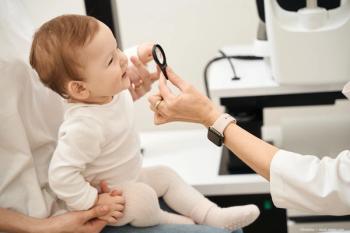
Eye-care services lacking in rural and low-income community health centers
A lack of access to eye-care services for residents in rural and low-income areas has become a major public health crisis in America, according to analysis from the George Washington University School of Public Health and Health Services.
Washington, DC-A lack of access to eye-care services for residents in rural and low-income areas has become a major public health crisis in America, according to analysis from the George Washington University School of Public Health and Health Services.
It was revealed that services provided by community health centers across the country for visual health and access to comprehensive eye exams for rural and low-income populations is severely lagging, according to the report, “Assessing the Need for On-Site Eye Care Professionals.”
Rural and low-income populations are at a greater risk for undiagnosed and untreated eye and vision problems and are less likely to receive comprehensive eye examinations. Therefore, federally funded community health centers in underserved communities are sometimes the only option to improve the visual health of residents living in these areas, however, 70% of the community health centers do not offer on-site vision care services.
"The American Optometric Association is committed to increasing access to eye care for all Americans," said Barry Barresi, OD, executive director of the American Optometric Association (AOA). "We have a responsibility to help ensure that essential primary eye care services are offered at these facilities. Greater access to preventive eye care can lead to diagnosis and treatment before loss of vision becomes severe or untreatable."
Working with health-care leaders and advocates, Dr. Barresi and the AOA, have been expanding access to eye health care provided at community health centers since 2006 when a letter of agreement was signed by the AOA, the National Association of Community Health Centers, the New England Eye Institute, and the Massachusetts League of Community Health Centers. All of the organizations supported this study and advocate for access to high quality, comprehensive and affordable vision care for all medically underserved populations in community health centers.
The analysis listed major barriers to providing on-site comprehensive eye-care services such as the inability to afford the necessary space and equipment, difficulties with Medicaid, Medicare and private insurance reimbursement, and discrepancies in Medicaid coverage and benefits across states.
A more detailed evaluation of the type and quality of eye care should be conducted to evaluate the cost of vision health. Additional research should also be conducted to assess the value of having an eye care professional on site and the impact of reducing or eliminating vision disparities.
Additional findings from the report include:
- Eleven percent of health centers report having full-time eye care professionals (those with paid eye care professionals utilize optometrists to staff their centers);
- Only 4% of community health centers surveyed plan to expand or build capacity for on-site eye care in the next 12 months;
- 73% of health centers do not plan to purchase instruments or equipment to provide comprehensive eye care over the next year;
- Only 10% of health centers have on-site optical space with an eyeglass frame inventory for patients to select, order, pick up, and have adjustments to complete eyeglass orders.
Newsletter
Don’t miss out—get Ophthalmology Times updates on the latest clinical advancements and expert interviews, straight to your inbox.



















































.png)


